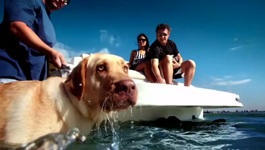Boating Lifestyle
Boating Lifestyle
There is so much to love, and learn, about boating. That's why we created this library of articles, videos and blog posts to help you throughout your adventures.
Freshwater Fishing Tactics

Where Fish May Be and Why
- Hiding areas, cover, structure, and the bottom
- Salinity
- Dissolved oxygen
- Water temperature
- Types and amounts of food
- Current
- Water depth
Structure
Salinity and Oxygen
Temperature
Food
Choosing the Method for You
The Benefits of Using a Boat
Trolling is Effective and Enjoyable
Either inshore or offshore, trailing lures or baits behind a slowly running boat enables anglers to cover a lot of water. Trolling is particularly effective for fish species that regularly feed on smaller fish. Outriggers (long extension spreaders) carry multiple lines out beyond the sides of the boat and enable trolling several lines at once. When a bait is struck, its line snaps free of the outrigger, to be played with a shorter, sturdy boat rod.
Here are links to the guidelines for each province.
British Columbia
Alberta
Saskatchewan
Manitoba
Ontario
Quebec
New Brunswick
Nova Scotia
Prince Edward Island
Newfoundland and Labrador
- Angler’s Guide (DFO)
Yukon
Northwest Territories
Nunavut
- To obtain a copy of the Nunavut Sport Fishing Guide, contact the Government of Nunavut Department of Sustainable Development headquarters office in Iqaluit (867) 975-5955 or the regional offices in Kugluktuk (867) 982-7240 or in Arviat (867) 857-2828.


